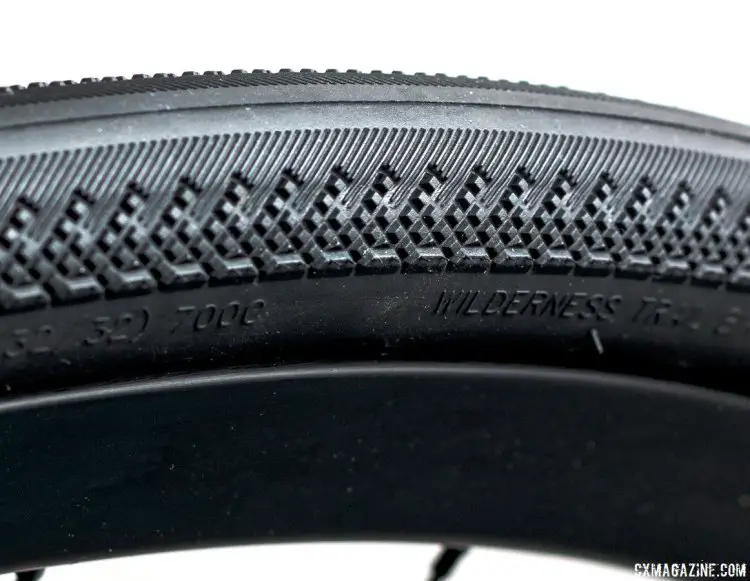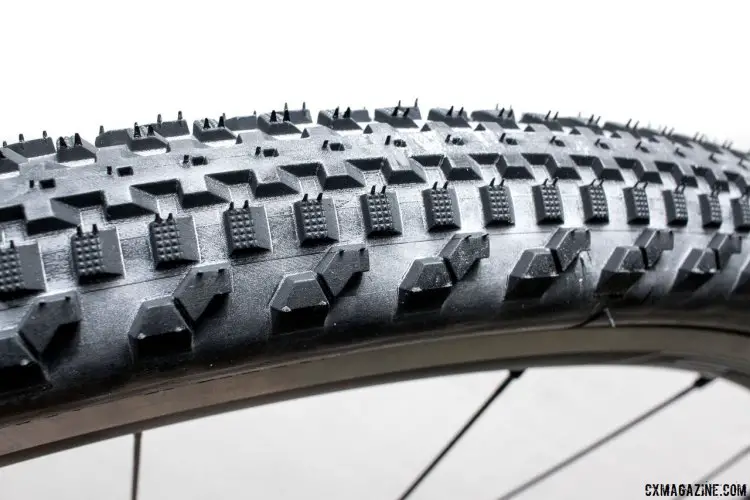Tackling the Tires
Is your cyclocross bike still dressed with the last ’cross race’s tire? That might work just fine for your gravel event, but it could also be woefully insufficient in terms volume, armor or tread.
Ask around about the terrain and any tire recommendations if you’re heading to an event that you’ve never done. Promoters and past participants will be happy to share experiences and knowledge.
If the event has a lot of pavement and smooth, groomed dirt or gravel roads, perhaps all you need is a fast-rolling, minimal tread that might even fit on a road bike. See five of our fast-rolling gravel and pavé favorites here.

Minimal side knobs keep the weight down and the pavement cornering predictable. The new WTB Exposure 32c tubeless tire. Tires for your own Hell of the North ride. © Cyclocross Magazine
Other events might require more volume, meatier tread and better puncture protection underneath the tread or sidewall. A few favorites are the versatile 42c Soma Cazadero, the WTB 45c Riddler, and if you really want heavy-duty rubber, the 50c Clement MSO X’Plor.

The Soma Fabrications Cazadero 42c gravel tire has become our fave go-anywhere, ride-anything tire. © Cyclocross Magazine
You’ll also likely want to shed the tubes and add sealant. A tubeless setup will have a better chance of avoiding pinch flats and keep you rolling after a small cut, provided your sealant is fresh and the cut is not low on the sidewall. More on this later.



























